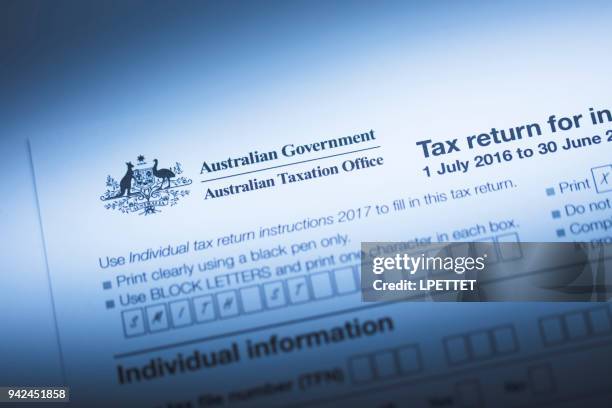Making Uses Of an Income Tax Return: Unlocking Potential Savings and Ensuring a Larger Tax Reimbursement
The tax obligation return offers as a necessary tool for individuals seeking to optimize their financial results, offering countless opportunities for prospective cost savings and improved refunds. The complexities of tax obligation guidelines and the ever-evolving landscape of tax legislation necessitate a complete understanding of readily available choices.
Understanding Tax Obligation Reductions
Many taxpayers may discover themselves overwhelmed by the intricacies of tax obligation deductions, yet understanding these important elements is crucial for maximizing potential savings. Tax reductions decrease taxable income, therefore decreasing the overall tax liability for businesses and individuals. Acquainting oneself with the numerous kinds of deductions readily available can substantially improve one's capacity to enhance tax obligation returns.
Reductions can be categorized into itemized and common deductions. The standard reduction supplies a set decrease in taxable earnings, while itemized deductions enable taxpayers to enumerate specific costs, such as home mortgage interest, state taxes, and philanthropic payments. Taxpayers should examine which choice yields the best benefit, as choosing the proper reduction method can result in considerable financial savings.
Furthermore, it is very important to maintain accurate documents of insurance deductible expenses throughout the tax obligation year. This method not only assists in the preparation of income tax return but likewise ensures conformity with internal revenue service needs. Taxpayers ought to also stay educated about modifications in tax obligation regulations that might influence eligible deductions, as these can vary annually. By efficiently passing through the landscape of tax deductions, people can reveal the possibility for a much more desirable tax obligation end result and safe and secure better monetary benefits.
Discovering Tax Obligation Credit Histories
Tax credit ratings stand for one more notable opportunity for taxpayers to decrease their overall tax obligation obligation, matching the advantages acquired from deductions. Unlike reductions, which reduced gross income, tax credit ratings give a dollar-for-dollar decrease of the real tax obligation owed. This difference makes tax credit reports particularly useful for individuals looking for to optimize their savings.
There are 2 primary types of tax credit ratings: nonrefundable and refundable. Nonrefundable credit ratings can lower your tax obligation responsibility to absolutely no but not listed below that amount, while refundable credit reports can result in a refund if the credit scores exceed the tax obligation owed. Instances of typically declared tax credit scores consist of the Earned Income Tax Credit Rating (EITC), the Child Tax Debt, and education-related credit scores like the American Possibility Credit Scores.
Eligibility requirements for these credit histories can differ considerably, typically based upon revenue, submitting status, and details conditions. Taxpayers should extensively examine the criteria related to each credit rating to determine they declare all advantages for which they qualify. By strategically utilizing readily available tax obligation credit ratings, individuals can improve their tax returns, ultimately leading to significant financial savings and possibly larger refunds.

Spending Your Refund Intelligently
Obtaining a Tax reimbursement can seem like a hop over to these guys financial windfall, yet just how that cash is used can profoundly affect long-lasting financial health. As opposed to viewing your reimbursement as disposable income, consider it a chance to invest in your future.

One efficient choice is adding to a Private Retirement Account (INDIVIDUAL RETIREMENT ACCOUNT) This can boost your retired life savings while potentially producing tax obligation advantages. Alternatively, buying a diversified stock profile can provide considerable development possibility with time, enabling your reimbursement to benefit you on the market.
Furthermore, think about using your reimbursement to pay for high-interest debt, such as charge card balances. Minimizing financial debt can enhance your economic standing and alleviate anxiety, ultimately permitting you to designate even more funds toward financial investments in the future.
For those concentrated on education and learning, using your reimbursement for a 529 college financial savings strategy can assist secure a brighter future on your own or your kids.
Planning for Future Expenditures
Carefully preparing for future expenditures is vital for keeping financial security and attaining lasting objectives. A well-structured financial strategy permits people to allocate resources properly, guaranteeing that link upcoming expenses do not interrupt their economic wellness. Tax returns can offer a valuable structure for this preparation process.
Utilizing the refund as a springboard, individuals can determine and prioritize substantial future expenditures, such as home repair services, education and learning expenses, or healthcare demands. Developing a budget plan that integrates these expected costs enables a proactive approach, decreasing the chance of monetary stress when the time involves address them.
Furthermore, reserving funds from your tax refund into committed interest-bearing accounts can improve the effectiveness of your preparation. Australian Tax return online. Think about creating a reserve especially for unanticipated costs, making sure that you are prepared for unforeseen scenarios without derailing your economic objectives
Common Blunders to Avoid
Numerous individuals make important mistakes when handling their tax obligation returns that can undermine their financial planning initiatives. Poor documents can lead to missed out on deductions, resulting in a reduced refund or greater tax obligation obligation.
One more frequent blunder is neglecting to examine tax obligation law modifications. Tax obligation laws can advance yearly, and lack of knowledge of these changes may lead to missed out on possibilities for tax debts or deductions. Additionally, numerous taxpayers overlook qualified reductions, such as those for instructional costs or clinical expenditures.
Filing taxes prematurely or as well late can additionally be harmful. Early filers may lose out on final tax obligation breaks, while late filers run the risk of charges and rate of interest.
Furthermore, not seeking specialist help when needed can cause expensive errors. Tax professionals can give beneficial insights, guaranteeing compliance and taking full advantage of potential financial savings.
Finally, hurrying with the return can result in simple math blunders or forgot forms. Putting in the time to double-check all entries is vital for a successful tax return outcome.
Final Thought
To summarize, the strategic use of income tax return serves as a critical device for making best use of monetary benefits. By completely understanding and using credit reports and reductions, people can significantly decrease taxed revenue and enhance reimbursement amounts. In addition, prudent financial investment of refunds and effective preparation for future expenditures add to long-lasting monetary stability. Awareness of typical risks can additionally simplify the tax procedure, eventually equipping taxpayers to utilize their returns for a more safe and secure monetary future.
Tax obligation credit histories stand for another remarkable opportunity for taxpayers to lower their general tax responsibility, complementing the benefits got from deductions. Unlike reductions, which lower taxed income, tax credit reports provide a dollar-for-dollar reduction of the real tax owed. Nonrefundable credit scores can decrease your tax obligation to no but not listed below that quantity, while refundable credit scores can result in a refund if the debts exceed the tax obligation owed. Instances of commonly asserted tax obligation credit scores consist of the Earned Income Tax Obligation Credit Report (EITC), the Kid Tax Credit report, and education-related credit why not look here scores like the American Possibility Credit Rating.
Tax obligation laws can progress yearly, and lack of knowledge of these changes may result in missed possibilities for tax obligation credit scores or reductions. - Australian Tax return online